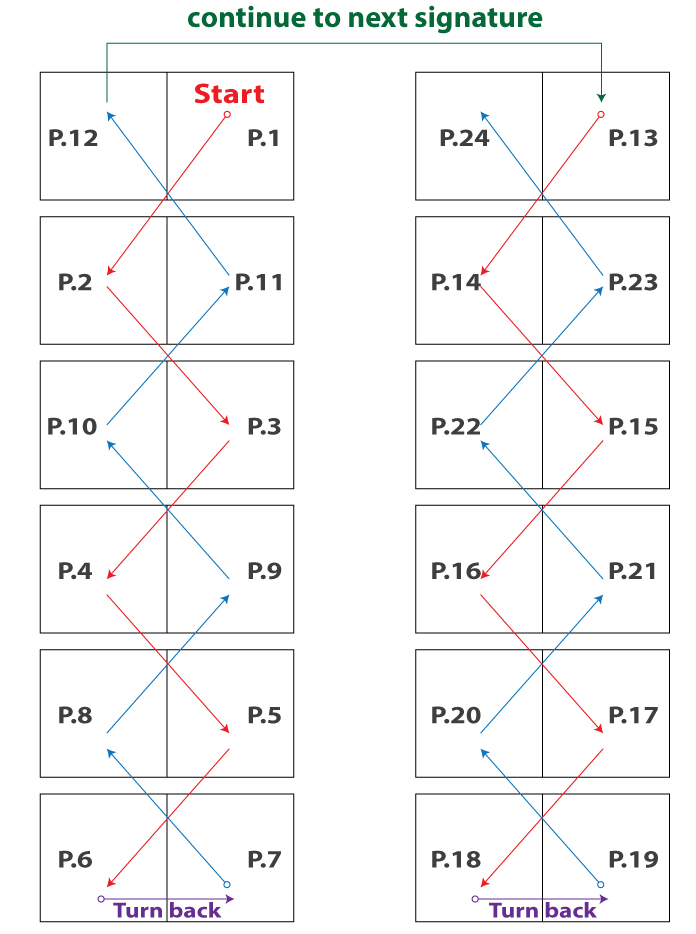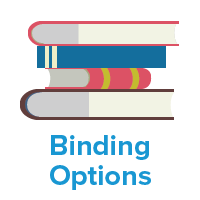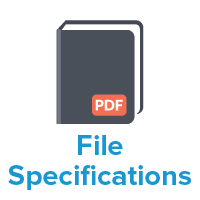When venturing into the intricate process of bringing your book to life, understanding how to read an eproof becomes paramount. This guide aims to unravel the nuances of eproofs and offering insights into how to read a printer spread.
What is an Eproof?
Before your book sees the light of day, it undergoes a crucial checkpoint—the electronic proof or eproof. This digital preview is your gateway to ensuring that every word, image, and detail aligns with your project.
Why is the Eproof Important? The eproof serves as a virtual blueprint, revealing how your book will look in print. It allows you to catch potential errors, ensure proper formatting, and guarantee that your work is faithfully captured. However eproof does not serve the purpose of color checking or color proofing, as the screen or monitor is using a completely different color mode of RGB, compares to the final printed product of CMYK mode.
What to Look for When Reviewing Your Eproof:
- Consistency: Check for consistent formatting, font styles, and layout throughout the document.
- Page Order: Ensure the pages follow the intended sequence, especially crucial for printer spreads in sewn books.
- Image Quality: Make sure the resolution and placement of images is where you want it to be.
- Text Alignment & Layout: Confirm that text is aligned correctly and flows seamlessly from page to page.
- Trim Marks: Check for trim marks to ensure proper page trimming during printing.
Printer Spread for Sewn Books
For books that are bound using a signature method (casebound smyth sewn, flexibound, saddle stitch, or thread stitch), the eproof often arrives in a printer spread. Think of these spreads as pairs of pages that mirror how your book will be physically assembled.
Sewn books are constructed in signatures. Each signature typically consists of 12-32 pages (3-8 sheets of full-spread paper folded in half), contributing to the intricate binding process.
- How to Read:
- Begin with the right-hand side of the first printer spread (usually an odd-numbered page).
- Then on the second printer spread, page two will be on the left hand side
- On the third printer spread, page three will be on the right hand side
- Continue in subsequent order, transitioning at the middle point of the signature.
- Verify consistency in formatting, alignment, and content accuracy.
Example: In an 24 page book, the printer spread might have 2 different signatures, with pages ordered like p12/p1, p2/p11, p10/p3, p4/p9, p8/p5 and p6/p7 as one signature, followed by another signature of p24/p13, p14/p23, p22/p15, p16/p21, p20/p17 and p18/p19.

Reader Spread for Bound Books: A Simpler Journey
For books like perfect bound, wire-o, coil bound, the eproof often presents itself in a reader spread like fashion. This will be a much easier reading process. This format simplifies the reading experience, aligning with how pages will appear when the book is opened.
- How to Read:
- Page 1 begins on the right, and page 2 is on the left, continuing in subsequent order.
- The proof is provided in a connected reading sequence for easy visualization.
Example: Pages are read consecutively from left to right, starting with page 1 on the right.
Eproof vs Printed Proof
We do our best to catch or avoid obvious errors, but it is up to you to ensure that the material you provide us matches your vision. There are some occasions that an eproof may not be sufficient to catch potential file error such as the use of transparency effect, overprint effect, font error, file rendering error or incorrect color mode. We strongly suggest that you order a printed proof to make certain that you get an idea what you will be getting before confirming to print the bulk order.
Regardless of any forms of proof, either an electronic or printed, please note to check all spelling, fonts, image resolution and layout carefully, as we are not responsible for errors or file issues after the proof is confirmed by the customer. It is the responsibility of the client to ensure all images and text resolutions meets their final standards.
Conclusion
Mastering the art of reading eproofs is not just a technical skill; it’s a journey through the pages of your creation. Whether your book is sewn or glue bound, understanding the nuances of printer spreads empowers you to provide valuable feedback, ensuring your final printed masterpiece captures your vision.
Happy proofing!







